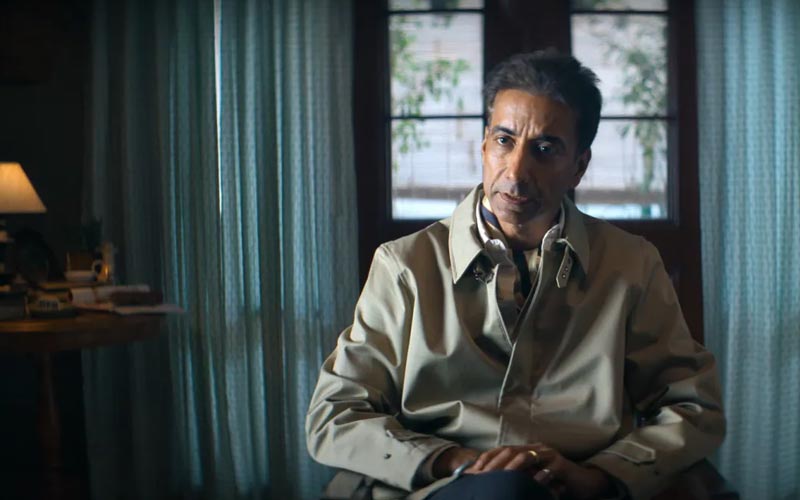Director: Ayesha Sood
Style: Documentary Sequence
Streaming on: Netflix
Because it stands, Netflix would possibly quickly surpass the Covid-19 pandemic because the prime wrongdoer behind the capital metropolis’s falling foreign-tourist numbers. If one have been to go by the streaming platform’s nonfiction slate, Delhi is the rotten wound that India bleeds from. True as it could be, this obsession with one metropolis – its individuals and politics, its horrors and hollowness – speaks to a bigger cultural malaise: one which Indian Predator: The Butcher of Delhi is each culpable and acutely aware of. For as soon as, the irony isn’t misplaced on the makers. However extra on this later.
Directed by Ayesha Sood, the three-part docuseries is the third Netflix true-crime title in fast succession that’s based mostly on ugly, headline-grabbing deaths within the Nationwide Capital Area (NCR). Very similar to A Large Little Homicide (whose 2021 launch was restrained by the Delhi Excessive Court docket) and Home of Secrets and techniques: The Burari Deaths, Indian Predator follows a frustratingly mounted narrative template. The primary two episodes discover the police investigation. The third one zooms out and does a postmortem of the society that makes a assassin. It’s value noting that Indian true-crime documentaries differ from their Western counterparts when it comes to this third act. Whereas Western titles keep rooted to the individualism and battle of crime, the Indian ones insist on providing an ethical decision. This narrative type – of diagnosing an issue with an intention of fixing it – is probably going an extension of Hindi cinema’s social-message-drama drawback. But when carried out well, as within the case of Home of Secrets and techniques and now Indian Predator, a docu-series is able to being an indictment of systemic cracks with out flaunting its braveness.
Indian Predator is a couple of serial killer who murdered three individuals, hacked up their corpses and left their physique elements strewn throughout completely different elements of town between 2006 and 2007. He would place their torsos exterior Tihar jail, make cellphone calls to the Delhi Police and taunt them with cocky, expletive-laden letters. The language on the notes suggests he’s from Bihar and likewise that, maybe, he derives his daring from dastardly Bollywood villains. However the film-making within the first two episodes is curiously bland and one-sided. Loads of the narrative unfolds from the police’s perspective, relying closely on accounts supplied by the cops liable for the nabbing of the killer and the next case-building. The recreations are nearly lurid – the sickening sound of a sickle decapitating a physique is used as a transition, and the cops appear like fast-moving heroes racing towards time in a Neeraj Pandey thriller. Solely two journalists seem as speaking heads, with solely one in all them criticizing the incompetence of the police in passing. The killer is introduced as a crazed ex-prisoner who holds a grudge towards the police for ill-treating him. In essence, there may be nothing right here you gained’t discover in a ‘70s masala film – police is nice; psychopath is unhealthy; the identities of the victims are secondary to the story that celebrates the chase. There’s a trace of the person’s previous, however the media discourse is proscribed to what the police conclude: 7 murders since 1998, sentenced to life imprisonment. To this point, so procedural.
However it’s the third episode that reveals the resolute gaze of Indian Predator. If the primary two episodes depicted the story in public and institutional reminiscence, the third one stories the origins of a narrative that no one – not the Delhi Police, not the media – thought of related sufficient. The docu-series turns the digital camera in the direction of the person’s distant village in Bihar, the place a sluggish however regular historical past of violence went unchecked by a system that equates the social company of justice with the standing of these concerned within the crime. The sobering interviews of the villagers are interspersed with that of a sufferer’s household within the metropolis – a tool that reveals the tendency of a nation to sideline the casualties of migrant tradition till they turn into an city statistic. By pursuing the fuller image of a case lowered to loud newspaper headlines, the makers additionally not directly implicate the police pressure for his or her function – and misdeeds – within the myopic sensationalism of Delhi-centric narratives. After hijacking the primary two episodes, they’re all however absent from the third one, save for a sheepish protection within the all-cops-are-not-corrupt vein. The journalists reappear as speaking heads in the direction of the tip, as does a forensic professional who explains the psychological penalties of societal neglect. The spoon-feeding is pointless, however I suppose it’s onerous to learn between the strains when the strains are so vivid.
It helps that the sequence is conscious it exists, too, due to three murders that occurred within the metropolis, not the horrors that transpired in a village. Because of this, Indian Predator: The Butcher of Delhi turns into a uncommon documentary that conveys data solely to show our relationship with this data. In doing so, it challenges our remoted notion of true crime – and underlines the levels of fact to against the law. In any case, the skeleton of a tragedy is seen means earlier than the physique is found.

